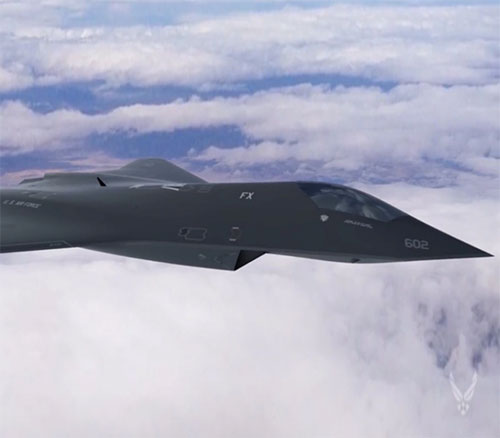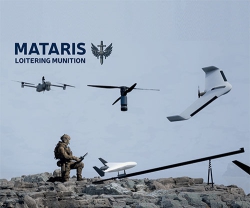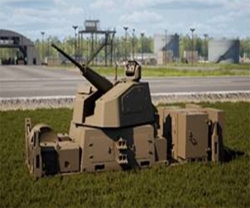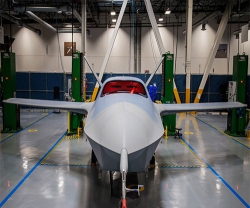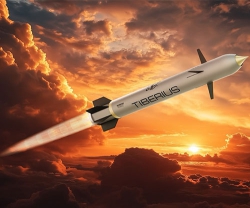The U.S. Air Force revealed this week that it has secretly designed, build, and tested a new prototype fighter jet. The fighter, about which we know virtually nothing, has already flown and “broken records.”
The Air Force must now consider how it will buy the new fighter as it struggles to acquire everything from intercontinental ballistic missiles to bombers.
The Air Force’s head of acquisition, Will Roper, made the announcement Wednesday in an exclusive interview with Defense News, in conjunction with the Air Force Association’s virtual Air, Space, and Cyber Conference.
The Air Force built the new fighter under its Next Generation Air Dominance (NGAD) program, which aims to build a jet that would supplement, and perhaps even replace, the Lockheed Martin F-22 Raptor.
The Air Force built 186 Raptors, of which only 123 are capable of the jet’s full spectrum of combat roles. And at current readiness levels, only around 64 of the fifth-generation fighters are ready to fight at a moment’s notice.
According to Defense News, the Air Force developed the new fighter in about a year - a staggeringly short amount of time by modern standards. The Air Force first developed a virtual version of the jet, and then proceeded to build and fly a full-sized prototype, complete with mission systems. This is in stark contrast to the F-35 Joint Strike Fighter.
The X-35, an early technology demonstrator, first flew in 2000, four years after Lockheed Martin signed the contract to build it. It might be better, however to compare this new mystery jet to the first actual F-35 fighter, which flew in 2006.
That means it took the Air Force just one year to get to the point with NGAD fighter that it reached in 10 years with the F-35. This appears to be the “record” the Air Force claims the new plane is smashing, and it's probably right.
We don’t know which defense contractor designed and prototyped the new jet, though it's almost certainly one of the big aerospace giants (Lockheed Martin, Northrop Grumman, and Boeing). We don’t know where it flew and where it is now. We don’t know how many prototypes exist. We don’t know what it looks like, what it’s called, how fast it flies, how maneuverable it is, and what special capabilities it has. We don’t know anything.
The Air Force designed the NGAD to ensure the service’s “air dominance” in future conflicts versus the fighters of potential adversaries. The new fighter, then, is almost certainly optimized for air-to-air combat. It’s a safe bet the fighter uses off-the-shelf avionics, engines, and weapons borrowed from other aircraft, such as the F-35 and F/A-18E/F. In fact, NGAD may look a lot like one of these fighters, though if the Air Force wanted a stealthy design to riff off, there’s only one (F-35) currently in production.
The most interesting, and perhaps revolutionary, thing about NGAD is that the Air Force developed and built it in just one year. The world hasn’t seen such a short development time since World War II. In fact, the trend has been for fighters to require longer, more expensive development times as technology becomes more complex—particularly with the adoption of stealth.
China’s Chngdu J-20 fighter, for example, broke cover in 2011 after at least 10 years of development time, while Russia’s Sukhoi Su-57 “Felon” fighter still hasn't entered production, despite the fact that we first saw it in 2010.
The possibility that a 10-year development cycle has been sheared to just one year presents unprecedented opportunities. If the Air Force and industry can design a new fighter in one year, it could come up with all sorts of cool new planes.
This could encourage the development of more exotic, riskier designs that contractors would not otherwise want to devote a full decade to develop. The ability to fail - or succeed - faster will drive innovation in the world of fighter jets in ways not seen for a half century or more.
One thing we can be reasonably sure about the new NGAD fighter? It’s designed to kill fighters like the J-20 and Su-57.
The Air Force first conceived the F-22 Raptor in the late 1980s and the F-35 Joint Strike Fighter in the 1990s. China and Russia built the J-20 and Su-57, respectively, with the F-22 and F-35 in mind, while the American fighters would have to adapt their existing capabilities to face the new Russian and Chinese fighters. But thanks to the Air Force’s new breakthrough design techniques, we could see a new, operational fighter to dominate these potential adversaries very, very shortly.
Still, NGAD enters a crowded shopping basket. Over the next 10 years, the Air Force is committed to buying and developing, if necessary, the F-35 Joint Strike Fighter, F-15EX Advanced Eagle, B-21 Raider strategic bomber, T-7 Red Hawk jet trainer, KC-46 Pegasus tanker, and Ground Based Strategic Deterrent (GBSD) ballistic missile.
How will it pay for all of them? That's to be determined. But given the Air Force’s bent toward air-to-air fighters, it seems certain NGAD will advance to the top of that list.

